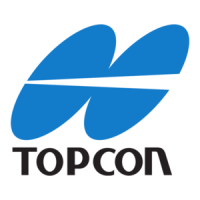Regulatory Information and Safety Warnings
Regulatory Information
3-3
P/N: 1049060-01
If this equipment does cause interference to radio or television equipment reception, which can be
determined by turning the equipment off and on, the user is encouraged to try to correct the
interference by one or more of the following measures:
● Reorient or relocate the receiving antenna.
● Move the equipment away from the receiver.
● Plug the equipment into an outlet on a circuit different from that to which the receiver is powered.
● Consult the dealer or an experienced radio/television technician for additional suggestions.
IC Statements
This Class A digital apparatus complies with Canadian ICES-003.
The term “IC:” before the radio certification number only signifies that Industry Canada technical
specifications were met.
Under Industry Canada regulations, this radio transmitter may only operate using an antenna of a
type and maximum (or lesser) gain approved for the transmitter by Industry Canada. To reduce
potential radio interference to other users, the antenna type and its gain should be so chosen that
the equivalent isotropically radiated power (EIRP) is not more than that necessary for successful
communication. This device complies with Industry Canada license exempt RSS standard(s).
Operation is subject to the following two conditions: (1) this device may not cause interference, and
(2) this device must accept any interference, including interference that may cause undesired
operation of the device. Under Industry Canada regulations, this radio transmitter may only operate
using an antenna of a type and maximum (or lesser) gain approved for the transmitter by Industry
Canada. To reduce potential radio interference to other users, the antenna type and its gain should
be so chosen that the equivalent isotropically radiated power (EIRP) is not more than that necessary
for successful communication.
Déclaration de conformité IC
CAN ICES-3(A)/NMB-3(A)
Cet appareil numérique de la classe A est conforme à la norme NMB-003 du Canada.
Conformément à la réglementation d'Industrie Canada, le présent émetteur radio peut fonctionner
avec une antenne d'un type et d'un gain maximal (ou inférieur) approuvé pour l'émetteur par Industrie
Canada. Dans le but de réduire les risques de brouillage radioélectrique à l'intention des autres
utilisateurs, il faut choisir le type d'antenne et son gain de sorte que la puissance isotrope rayonnée
équivalente (PIRE) ne dépasse pas l'intensité nécessaire à l'établissement d'une communication
satisfaisante. Ce matériel respecte les standards RSS exempt de licence d’Industrie Canada. Son
utilisation est soumise aux deux conditions suivantes: (1) l’appareil ne doit causer aucune
interférence, et (2) l’appareil doit accepter toute interférence, quelle qu’elle soit, y compris les
interférences susceptibles d’entraîner un fonctionnement non requis de l’appareil. Selon la
réglementation d’Industrie Canada, ce radio transmetteur ne peut utiliser qu’un seul type d’antenne
et ne doit pas dépasser la limite de gain autorisée par Industrie Canada pour les transmetteurs. Afin
de réduire les interférences potentielles avec d’autres utilisateurs, le type d’antenne et son gain
devront être définis de telle façon que la puissance isotrope rayonnante équivalente (PIRE) soit juste
suffisante pour permettre une bonne communication.
CAN ICES-3(A)/NMB-3(A)

